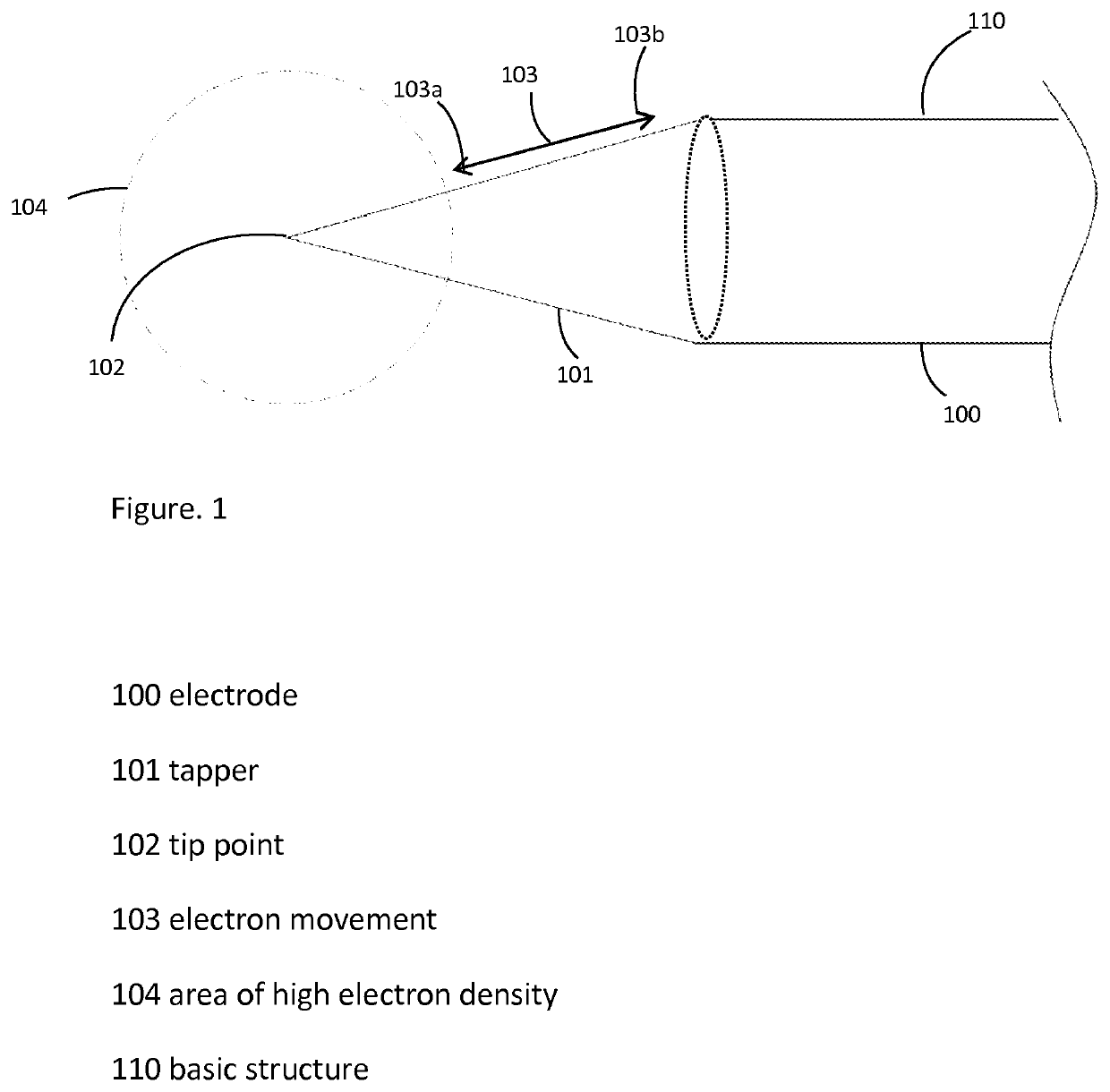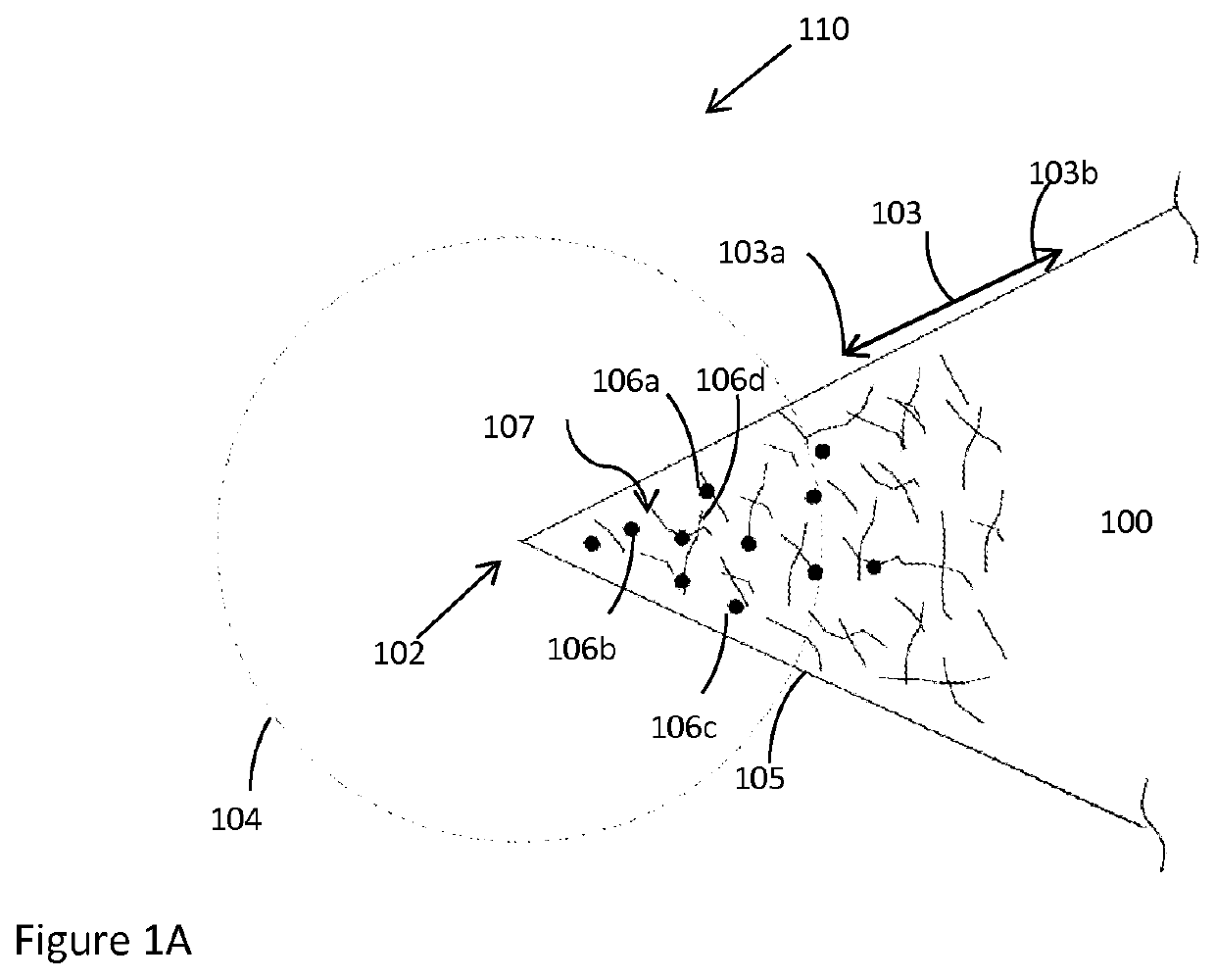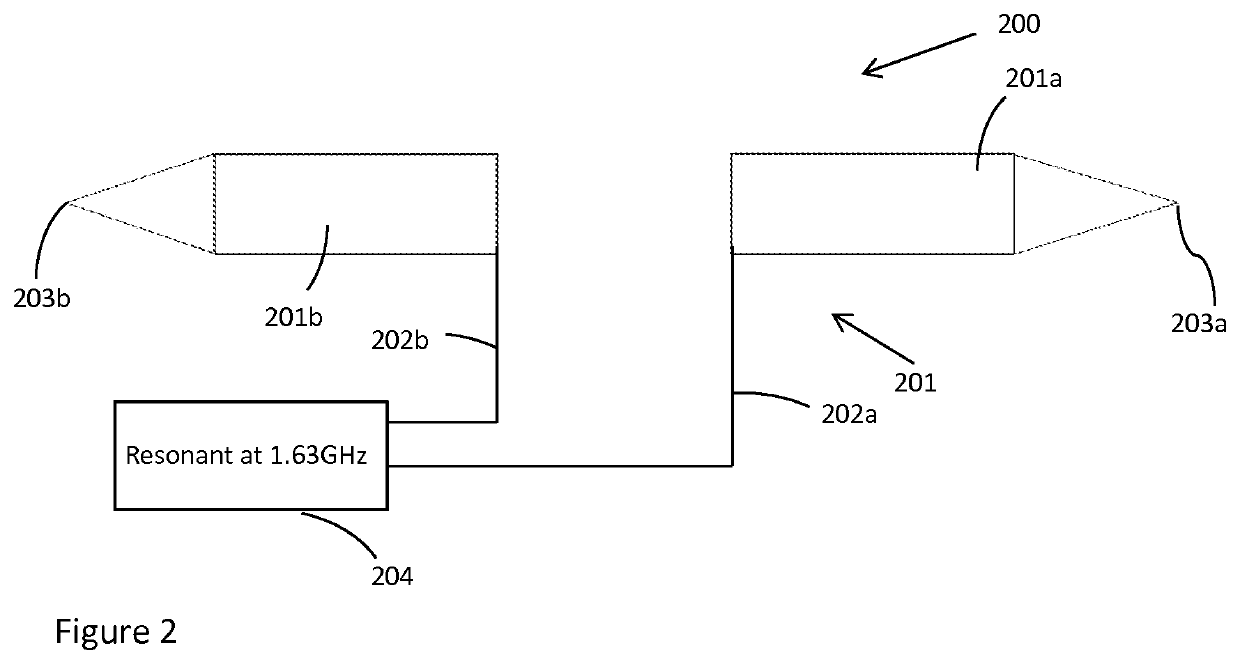Submicron fusion devices, methods and systems
a technology of fusion devices and submicron particles, applied in the field of submic, can solve the problems of large fusion devices and systems, large energy loss in conventional fusion systems, complex, difficult to manage, etc., and achieve the effects of suppressing radiation losses, greatly reducing radiative losses, and suppressing electron mobility
- Summary
- Abstract
- Description
- Claims
- Application Information
AI Technical Summary
Benefits of technology
Problems solved by technology
Method used
Image
Examples
example 1
[0085]Turning to FIG. 2 there is shown a schematic of a submicron controlled fusion device 200. The device 200 has an electrode 201a, which is part of the base structure 201. The device 200 has a second electrode 201b, which is also part of the base structure 201. The electrodes 201a and 201b have substructures that contain the fusion fuel. The electrodes 201a, 201b, have tips 203a, 203b, which are discontinuities. Electrode 201a is connected to high density electron generator 204 by lead line 202a. Electrode 201b is connected to high density electron generator 204 by lead line 202b. The high density electron generator 204, in the embodiment of this example is an RF generator operating at 1.63 GHz. The dimensions for the device 200 are provided in the figure and are in inches.
[0086]Turning to FIG. 3 there is shown a schematic representation of the electron fields that will be generated by the device 200. FIG. 3 is a plan view, looking down the y-axis, of the tip 203b and electrode 2...
example 2
[0087]The embodiment of example 1, has the electrodes made from palladium, and are coated with a thin layer of gold. The fusion fuel is a 50:50 mixture of hydrogen-1 and deuterium, and loaded to a particle density of 1022- / cc.
example 3
[0088]The device of Example 2 has been operated in a cloud chamber to test the behavior of electrons. According to theory and past experiments the cloud chamber will show the emission of fusion product particles from the electrodes. The fusion products will include helium-3.
PUM
 Login to View More
Login to View More Abstract
Description
Claims
Application Information
 Login to View More
Login to View More - R&D
- Intellectual Property
- Life Sciences
- Materials
- Tech Scout
- Unparalleled Data Quality
- Higher Quality Content
- 60% Fewer Hallucinations
Browse by: Latest US Patents, China's latest patents, Technical Efficacy Thesaurus, Application Domain, Technology Topic, Popular Technical Reports.
© 2025 PatSnap. All rights reserved.Legal|Privacy policy|Modern Slavery Act Transparency Statement|Sitemap|About US| Contact US: help@patsnap.com



